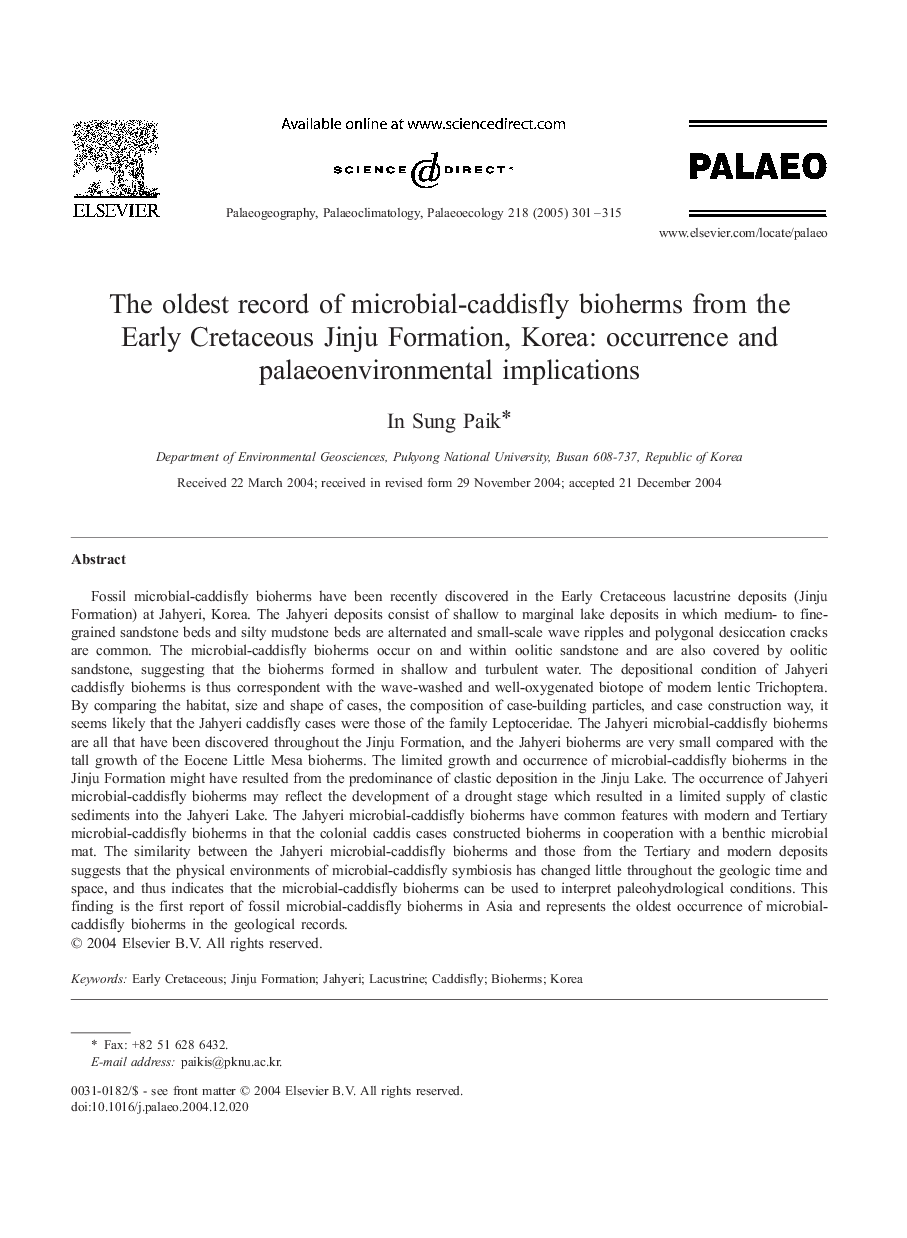| Article ID | Journal | Published Year | Pages | File Type |
|---|---|---|---|---|
| 9463160 | Palaeogeography, Palaeoclimatology, Palaeoecology | 2005 | 15 Pages |
Abstract
Fossil microbial-caddisfly bioherms have been recently discovered in the Early Cretaceous lacustrine deposits (Jinju Formation) at Jahyeri, Korea. The Jahyeri deposits consist of shallow to marginal lake deposits in which medium- to fine-grained sandstone beds and silty mudstone beds are alternated and small-scale wave ripples and polygonal desiccation cracks are common. The microbial-caddisfly bioherms occur on and within oolitic sandstone and are also covered by oolitic sandstone, suggesting that the bioherms formed in shallow and turbulent water. The depositional condition of Jahyeri caddisfly bioherms is thus correspondent with the wave-washed and well-oxygenated biotope of modern lentic Trichoptera. By comparing the habitat, size and shape of cases, the composition of case-building particles, and case construction way, it seems likely that the Jahyeri caddisfly cases were those of the family Leptoceridae. The Jahyeri microbial-caddisfly bioherms are all that have been discovered throughout the Jinju Formation, and the Jahyeri bioherms are very small compared with the tall growth of the Eocene Little Mesa bioherms. The limited growth and occurrence of microbial-caddisfly bioherms in the Jinju Formation might have resulted from the predominance of clastic deposition in the Jinju Lake. The occurrence of Jahyeri microbial-caddisfly bioherms may reflect the development of a drought stage which resulted in a limited supply of clastic sediments into the Jahyeri Lake. The Jahyeri microbial-caddisfly bioherms have common features with modern and Tertiary microbial-caddisfly bioherms in that the colonial caddis cases constructed bioherms in cooperation with a benthic microbial mat. The similarity between the Jahyeri microbial-caddisfly bioherms and those from the Tertiary and modern deposits suggests that the physical environments of microbial-caddisfly symbiosis has changed little throughout the geologic time and space, and thus indicates that the microbial-caddisfly bioherms can be used to interpret paleohydrological conditions. This finding is the first report of fossil microbial-caddisfly bioherms in Asia and represents the oldest occurrence of microbial-caddisfly bioherms in the geological records.
Related Topics
Physical Sciences and Engineering
Earth and Planetary Sciences
Earth-Surface Processes
Authors
In Sung Paik,
